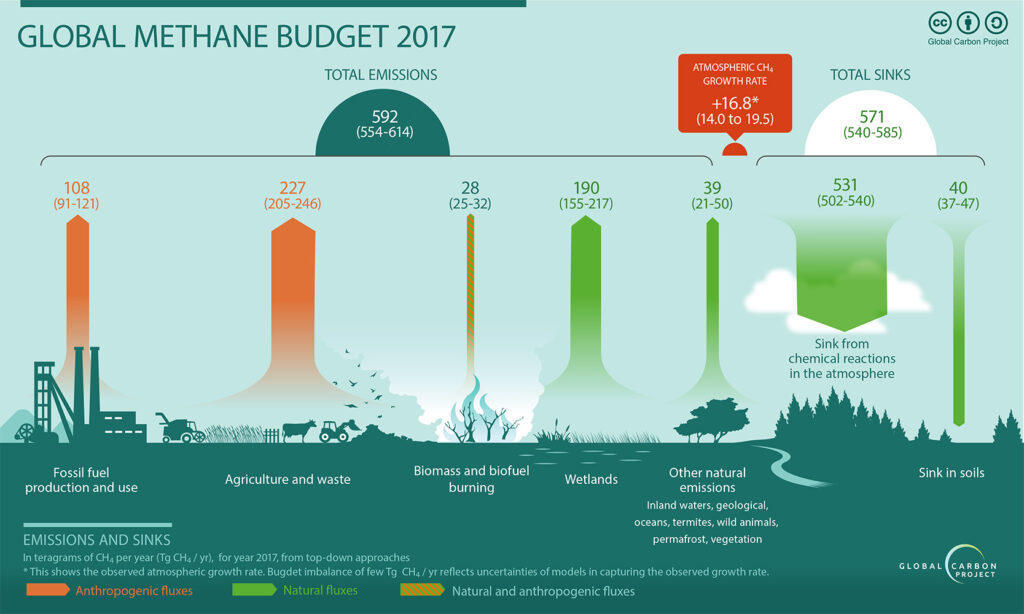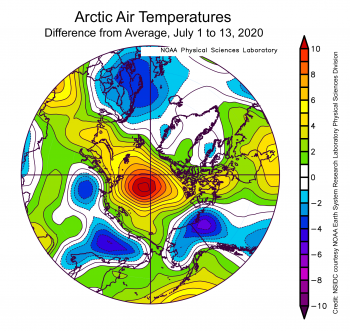Further Evidence suggests Arctic Ocean Methane Storage getting Unstable
Experts of the field in studying one of the most puzzling regions in the Arctic for methane emissions, the East Siberian Arctic Shelf (ESAS) reported last October about the largest readings since studies started there 15 years ago.
The region is known to be particular important due to it’s size, and low water depth, with methane (CH4) stored within sediments either in form of methane hydrates, or sealed by an icy layer called subsea permafrost.
Levels are highest seen in decades of research
CNN: Semiletov, a professor at Tomsk Polytechnic University in Siberia, said the ship full of scientists reached the East Siberian Sea around the beginning of October.
The water is usually tough to get through due to it being “covered in ice,” but Semiletov said this year was different. The water was “fully open.”The team studied more than 60 sites known to have had methane emissions at the water’s surface in the past.
Each emission site varies in size. Some spread across 100 square meters of sea surface. Others can cover a square kilometer.
When the plumes of methane reach the surface, the water looks like it’s boiling. The researchers take samples of the air above the bubbling columns to determine how much methane is coming out of the sea, and its potential to alter the atmosphere.
In previous trips, Semiletov said he found methane at 3, 4 or 5 parts per million at these sites, well above the average atmospheric methane concentration of 1.7 parts per million. On this trip, some of the measurements were up to 16 parts per million.
Semiletov said he embarked on 30 to 35 expeditions over the past 15 years, but on this one there were some surprises.
He said the methane emissions, which look like torches or flares, are “all increasing.”
So far, even without a critical possible addition of this extra oceanic source for methane to the atmospheric greenhouse gases budget, they mark a record level.
Global methane emissions soar to record high
Stanford announced this week: Global emissions of methane have reached the highest levels on record. Increases are being driven primarily by growth of emissions from coal mining, oil and natural gas production, cattle and sheep ranching, and landfills.

CarbonBrief: By the end of 2019, the concentration of methane in the atmosphere reached around 1875 parts per billion (ppb), the researchers say – more than two-and-a-half times pre-industrial levels.
Arctic conditions for Methane release become more favorable
Latest data shows lowest sea ice conditions for the discussed Arctic ESAS region.
https://twitter.com/ZLabe/status/1284595460766707712

NSIDC: Air temperatures at the 925 mb level (about 2,500 feet above sea level), as averaged over the first half of July, were unusually high over the central Arctic Ocean—up to 10 degrees Celsius (18 degrees Fahrenheit) (Figure 2b). These above average temperatures were associated with high sea level pressure, centered over the East Siberian and Chukchi Seas (Figure 2c). Arctic temperatures along the Russian coast were near to slightly above average. This is a sharp change from June, when, as part of the Siberian heat wave that has garnered much attention in the media, temperatures along the Siberian coast of the eastern Laptev Sea were 8 degrees Celsius (14 degrees Fahrenheit) above average. It is likely these high temperatures, combined with ice motion away from the coast, initiated early ice retreat along the Russian coast, leading to the present low ice extent (Figure). Based on imagery from AMSR-2 processed by colleagues at the University of Bremen, the Northern Sea Route along the Russian coast appears to be largely open.
Since our observational data and obtained records suggest interconnection between the sea ice cover and the amount of ocean methane escaping to the atmosphere, less sea cover will likely improve the conditions for warmer water conditions, in turn releasing more methane.
Though, while it is likely that sea ice cover usually just blocks methane, suggesting more is instead dispersed in the column water, instead reaching the air, warmer conditions will likely make an impact.
The exact impact of less sea ice on the still sealed away methane compartments is still unknown, or at best poorly understood.
The authors of the 2019 French study, Using ship-borne observations of methane isotopic ratio in the Arctic Ocean to understand methane sources in the Arctic, noted, ‘..in addition to increased
CH4 emissions from wetlands and thawing permafrost, increasing ocean temperatures could lead to the destabilization of methane hydrates on the Arctic continental shelf, potentially emitting large quantities of CH4.’
This scenario is now further fueled by prolonged record setting heatwaves.
Nature: The devastating heat wave between January and June 2020 in the Arctic was made at least 600 times more likely as a result of human-induced climate change. An international team of climate scientists, led by the UK Met Office, analysed the prolonged high average temperatures over 6 months and the record-breaking high of 38 ℃ recorded in Verkhoyansk on 20 June, a town roughly 600 km from the ESAS coast. “We found in both cases that this event would have effectively been impossible without human-induced climate change,” say researchers.
There are basically two camps when it comes to the Arctic ocean methane hydrate release (not to be confused with the on land permafrost in the Arctic), one camp argues there could be catastrophic sudden outburst of massive amount of methane, and the other camp basically pointing to very low probability of such happening.
In my opinion there is possible a progressively getting worse by the year situation, and we can do nothing about that, other than to try balancing it off with even more draconian actions to minimize the heat trapping gases we can still control.
CNN: “The very shallow water column and weakening permafrost” could lead to the doubling of methane in the atmosphere in “a matter of decades,” Shakhova suggested.
The uncertainties surrounding this region’s methane potential is huge.
Stanford: Between 2000 and 2017, levels of the potent greenhouse gas barreled up toward pathways that climate models suggest will lead to 3-4 degrees Celsius of warming before the end of this century. This is a dangerous temperature threshold at which scientists warn that natural disasters, including wildfires, droughts and floods, and social disruptions such as famines and mass migrations become almost commonplace. The findings are outlined in two papers published July 14 in Earth System Science Data and Environmental Research Letters by researchers with the Global Carbon Project, an initiative led by Stanford University scientist Rob Jackson.
Further Reading
- New Mechanism for Methane Hydrate Dissociation Discovered http://climatestate.com/2019/06/19/new-mechanism-for-methane-hydrate-dissociation/
- Arctic sea ice in the ESAS region and marine regime changes https://forum.arctic-sea-ice.net/index.php/topic,3201.0.html
- Sources of Methane https://svs.gsfc.nasa.gov/temp/d05978755/index.html
Related
- First quantitative estimation of growing methane release from the East Siberian Arctic seas: from a single flare to vast seepage area https://ui.adsabs.harvard.edu/abs/2020EGUGA..2222402C/abstract
- Siberian-Arctic Subsea Permafrost and Methane: Spatial variability and isotope-based source apportionment https://ui.adsabs.harvard.edu/abs/2020EGUGA..2221660H/abstract
- River Inflow Dominates Methane Emissions in an Arctic Coastal System https://agupubs.onlinelibrary.wiley.com/doi/abs/10.1029/2020GL087669
- Assessing the potential for non-turbulent methane escape from the East Siberian Arctic Shelf https://search.proquest.com/openview/13aef94920fccb889926d1f8131a5272/1?pq-origsite=gscholar&cbl=105740
Teaser image ebullition bubbles via Shakhova et al.
About the Author: CLIMATE STATE
POPULAR
COMMENTS
- Robert Schreib on Electricity generation prices may increase by as much as 50% if only based on coal and gas
- Robert Schreib on China made a historic commitment to reduce its emissions of greenhouse gases
- Lee Nikki on COP30: Climate Summit 2025 – Intro Climate Action Event
- Hollie Bailey on Leaders doubled down on fossil fuels after promising to reduce climate pollution
- Malcolm R Forster on Mythbusters tests global warming theory – does CO2 warm air?